This step by step woodworking project is about how to make an insulated dog house. If you want to protect your pet from cold, you should invest in building an insulated dog house. You should adjust the size of the dog house, so that your pet should turn around easily inside the shelter. FULL PLANS for this dog house on HowToSpecialist.
We recommend you to invest in the best materials you could afford. Therefore, you should buy weather-resistant lumber, such as pressure-treated lumber, pine or cedar. Always take accurate measurements before adjusting the size of the components at the proper size. Drill pilot holes trough the components before inserting the wood screws, to prevent the wood from splitting.
Made from this plan
How to build an insulated dog house
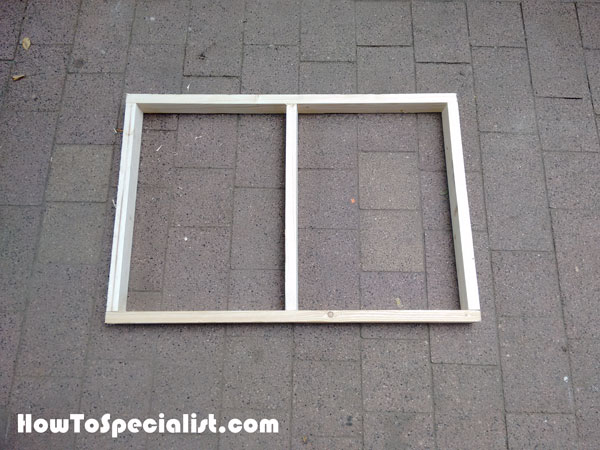
Side walls
The first step of the project is to assemble the side frames. Cut the components at the right dimensions and align them with attention. Make sure the corners are square. Drill pilot holes through the plates and insert 2 1/2″ screws into the studs. See the plans for this dog house here.
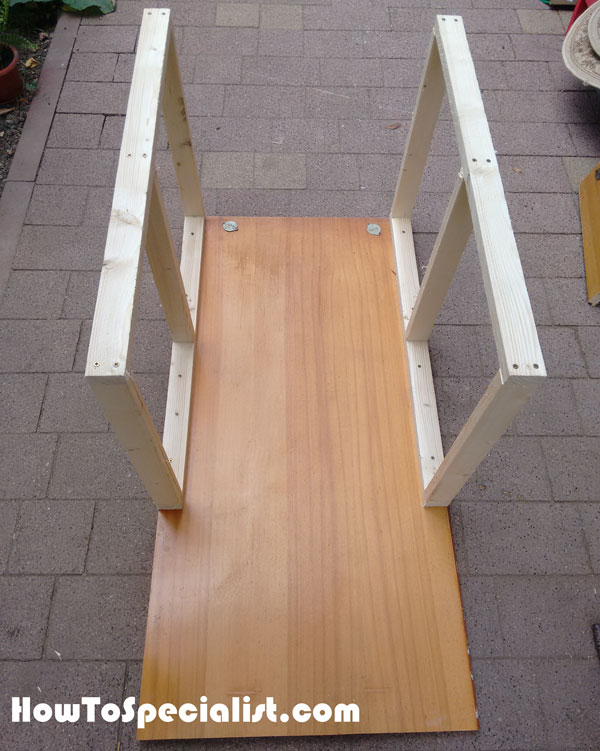
Fitting the side walls
Next, I attached the frames to the floor of the dog house. Drill pilot holes through the bottom plates and insert 2 1/2″ screws into the floor. Plumb the side walls with a spirit level to make sure they are plumb.
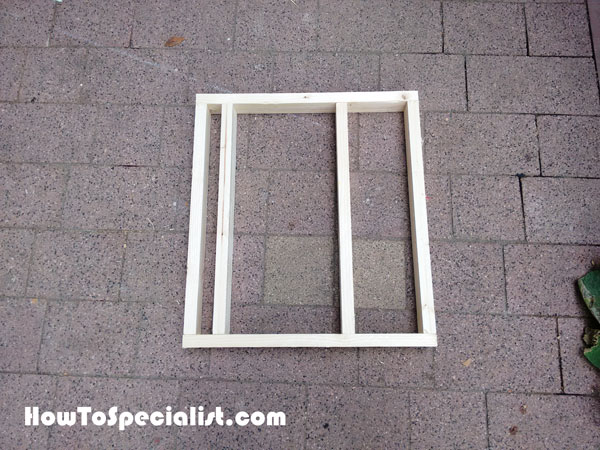
Front wall
I framed the front wall in the same manner described above.
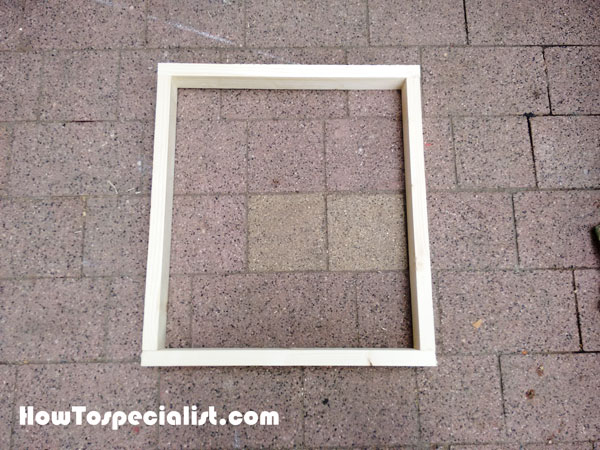
Back Wall
Assemble the back wall for the dog house. Double check if the corners are square.
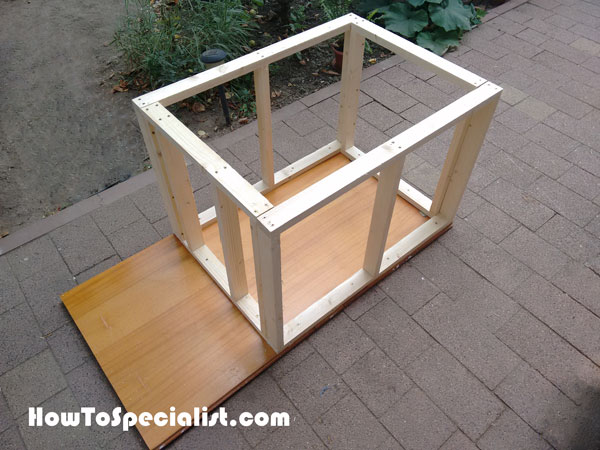
Assembling the dog house
Fit the front and back walls to the frame of the dog house. Drill pilot holes and insert 2 1/2″ screws to lock the adjacent walls together. Make sure the corners are square and align the edges with attention.
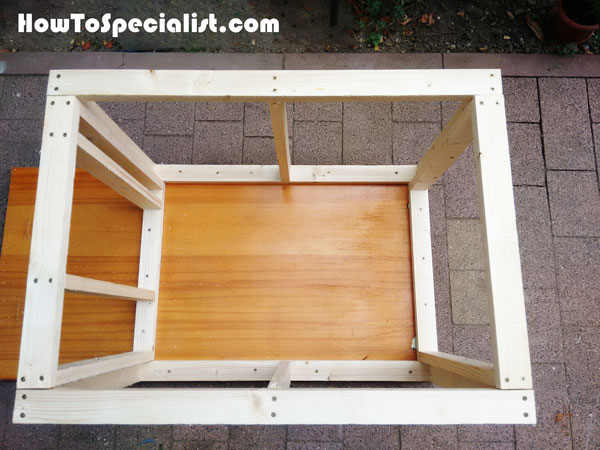
Dog House
The dog house is starting to take shape. All we are left to do is install the paneling and the insulation.
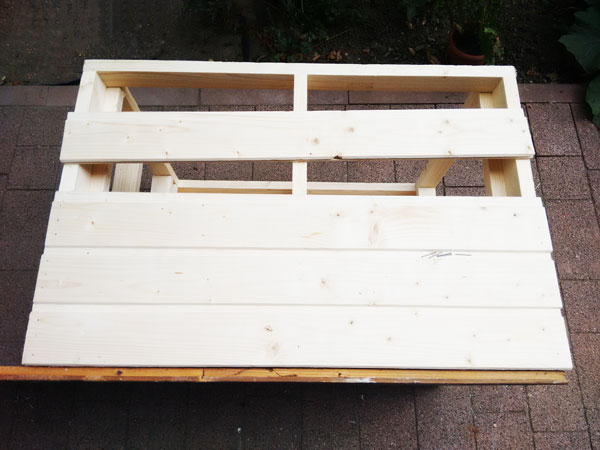
Fitting the walls
I installed 1×6 paneling slats to the sides of the dog house. Use 1 5/8″ brad nails to lock the slats to the framing. Alternatively, you can use 3/4″ plywood sheets.
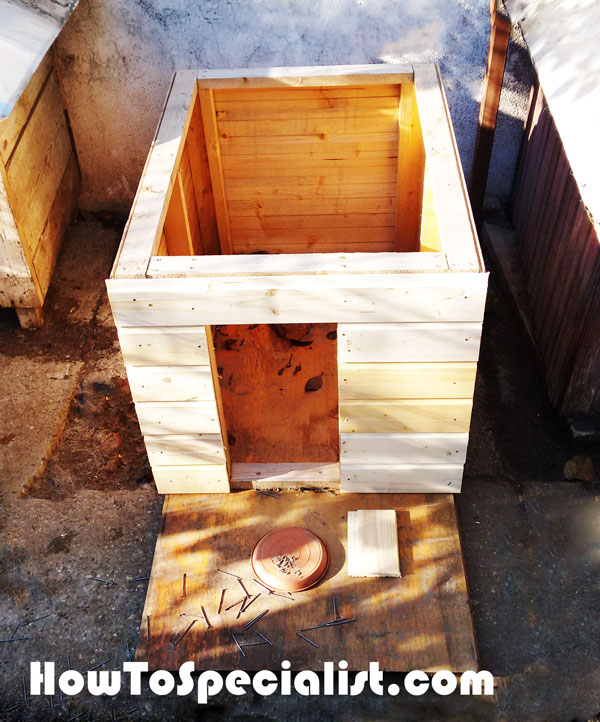
DIY-Dog-house
I installed the paneling slats to the front and to the back of the dog house. The tongue and groove slats can connect easily, so you save time.
Adding the insulation
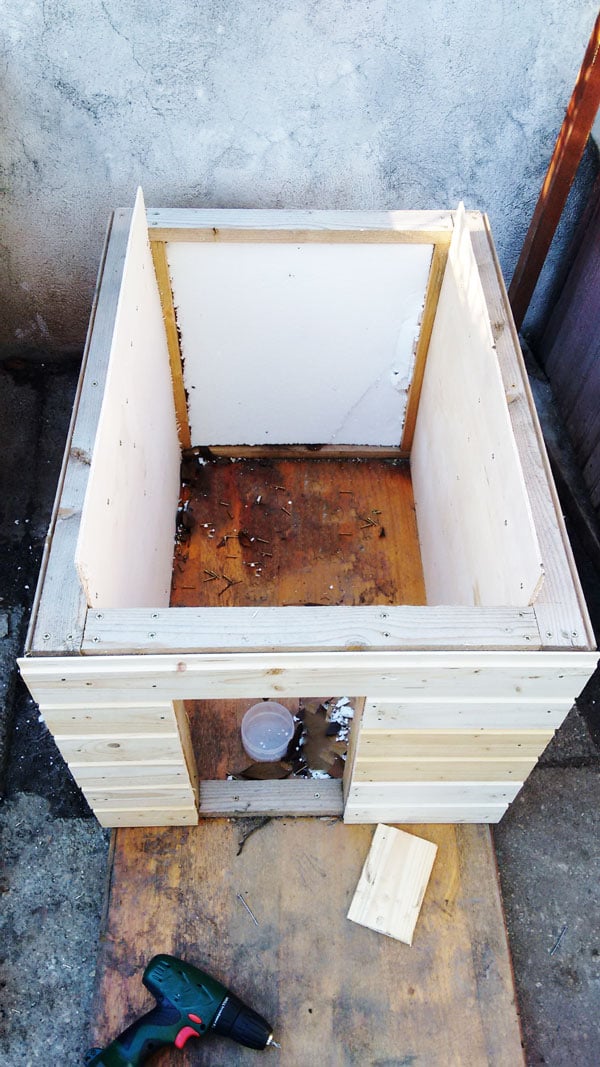
Fitting the interior walls
I installed 1 1/2″ rigid foam polystyrene insulation to the walls, as shown in the image. Take measurements twice and cut once.
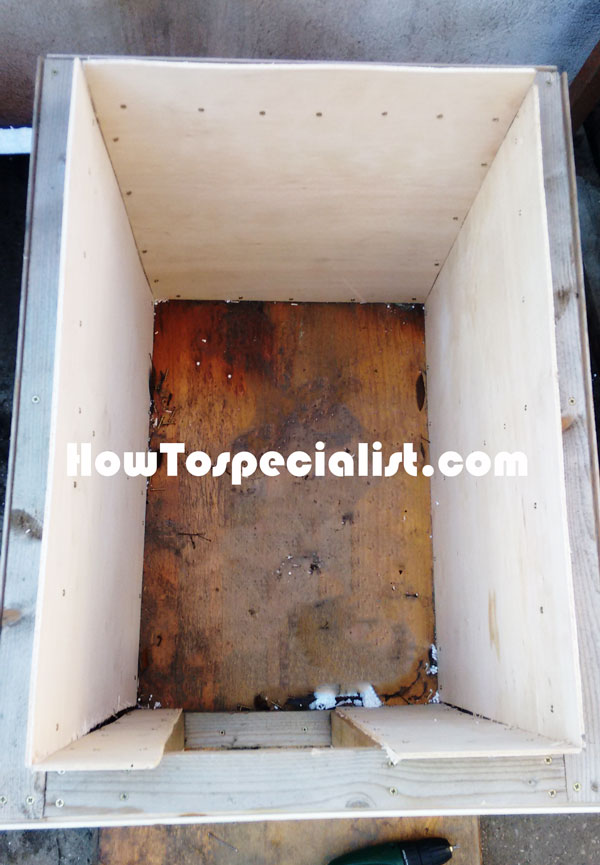
Attaching the interior walls
Next, I installed the 1/4″ plywood sheets to the interior of the dog house. Use 1 1 /4″ screws to lock the sheets into place.
Building the roof
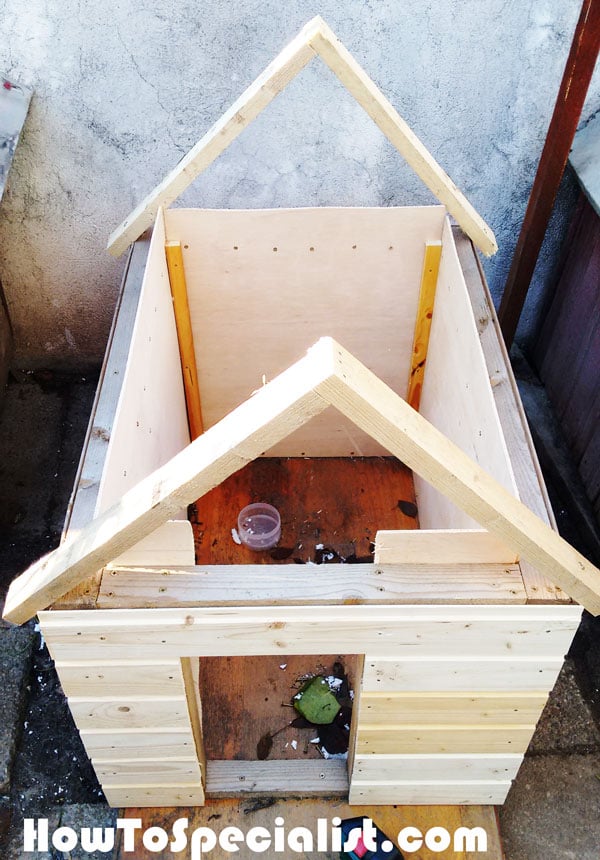
Fitting the rafters
I installed 1×1 pieces to the four corners of the dog house. Next, I installed the rafters to the top of the dog house. Make sure the top angle is 90 degrees. Drill pilot holes and lock the rafters into place with 2 1/2″ screws.
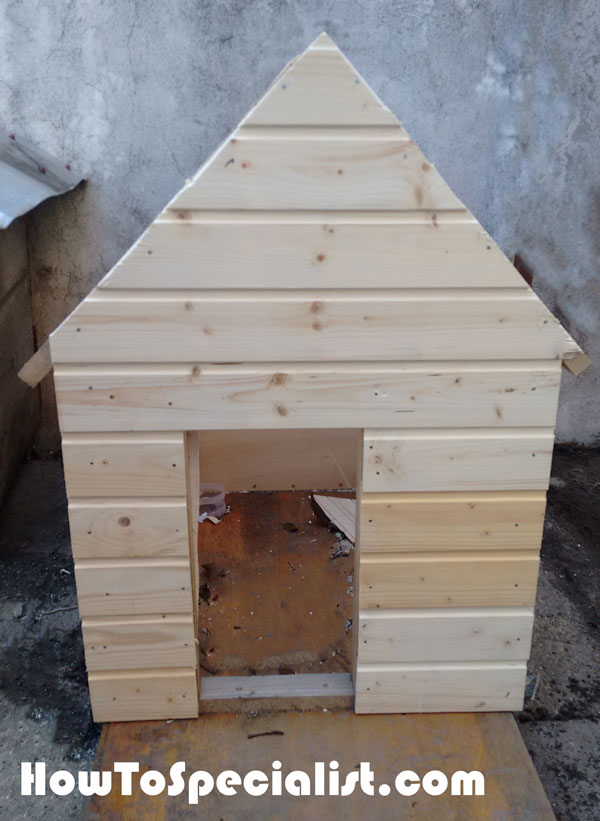
Fitting the gable ends
Attach the paneling slats to the front and to the back of the dog house. Cut the slats with a saw along the rafters.
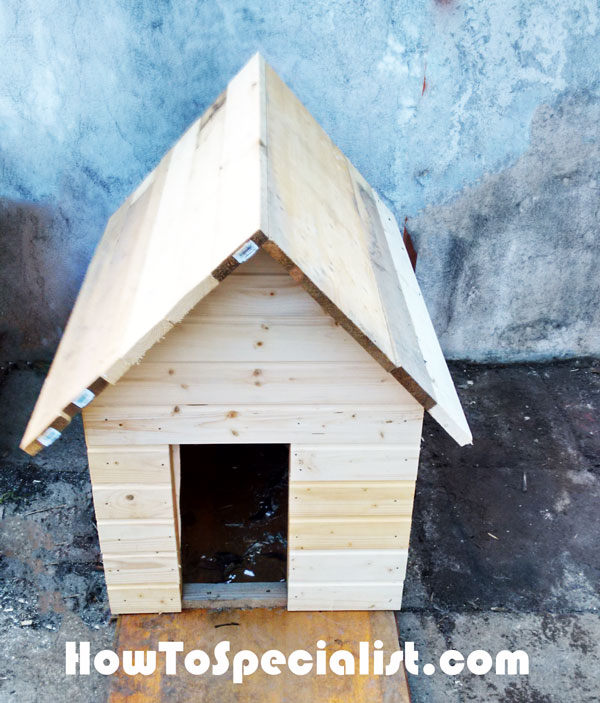
Fitting the roofing slats
I attached the 1×4 slats to the rafters. You can use 3/4″ plywood. if you want to get the job done quickly. Align the sheets with attention and lock them into place with 1 5/8″ screws.
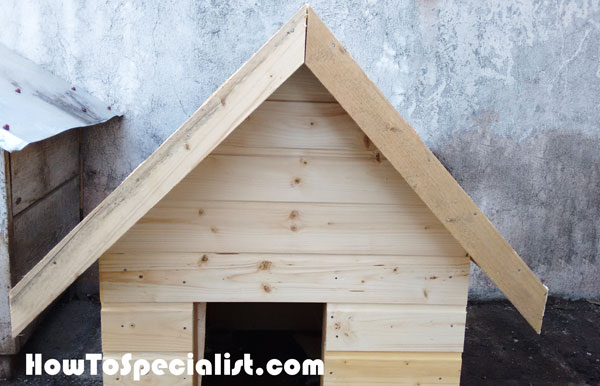
Fitting the front trims
Fit 1×2 trims to the front of the dog house. Use 1 5/8″ brad nails to lock the trims into place.
Fitting the roofing
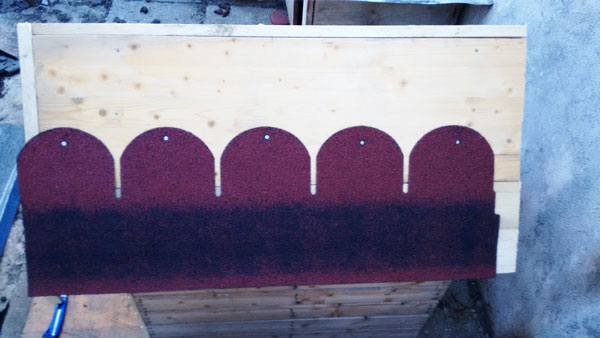
Fitting the roofing sheets
Install the asphalt shingles to the roof of the dog house.

Attaching the asphalt shingles
Fit the shingles to the roof starting with the bottom of the roof.
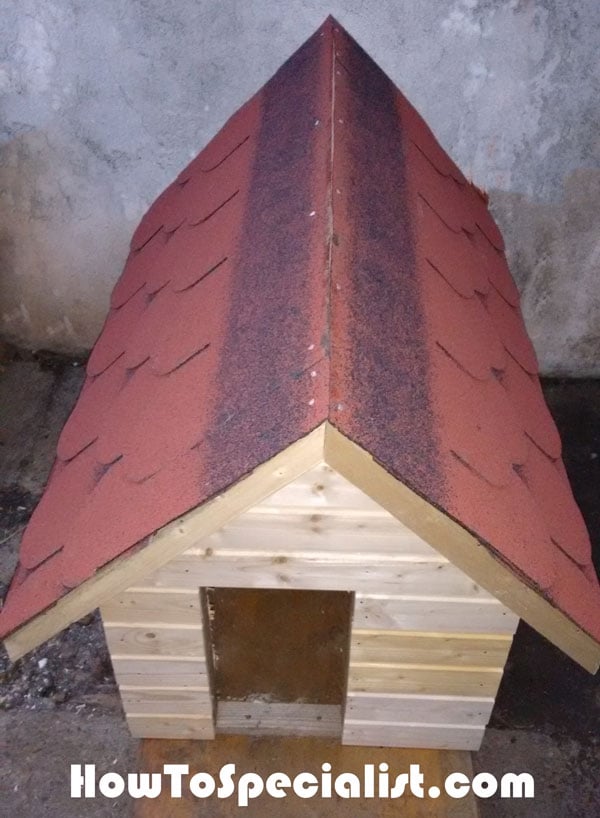
How to build a dog house
Install the ridge cap to seal everything tightly.
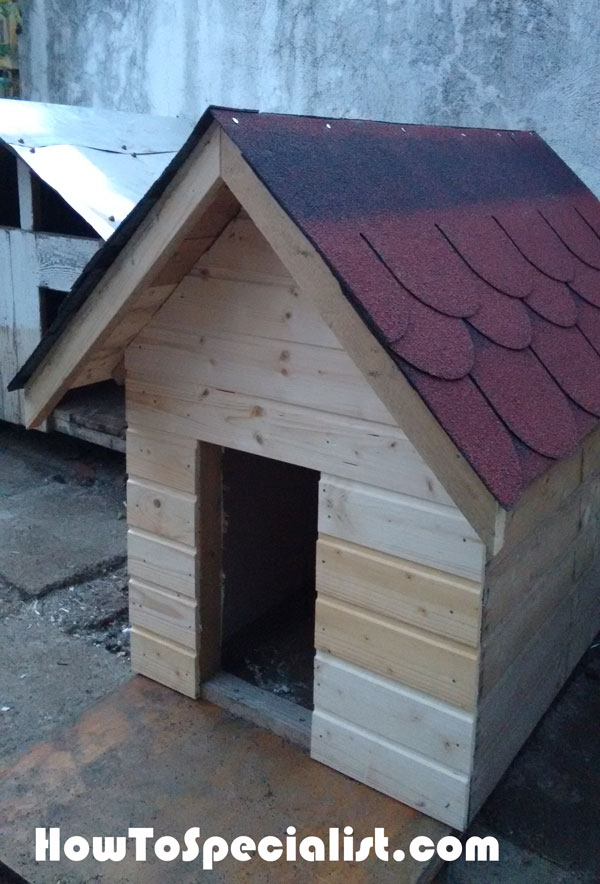
Building a dog house
Take care of the finishing touches for a professional result.
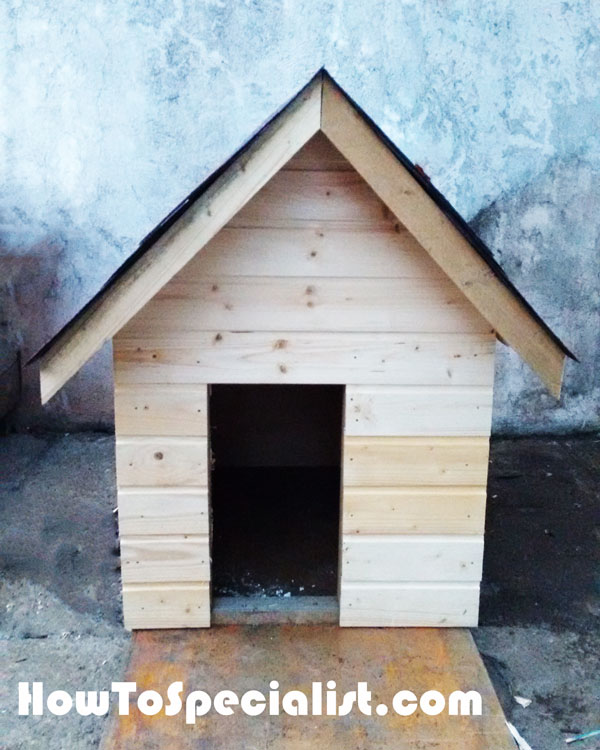
How to build an insulated dog house
My best tips on building an insulated dog house:
A well-built, insulated dog house can keep your furry friend comfortable year-round, whether it’s cold or hot outside. With the right materials and construction methods, you can create a cozy, weatherproof shelter for your dog. Here are my best tips to help you build the perfect insulated dog house.
1. Choose Durable and Insulating Materials
The key to a well-insulated dog house starts with choosing the right materials. Use exterior-grade plywood or cedar for the walls and floor, as these materials are durable and moisture-resistant. For insulation, consider using polystyrene foam boards or spray foam insulation between the inner and outer walls to trap heat during winter and keep the house cool in summer.
2. Elevate the Dog House
Raising the dog house a few inches off the ground prevents moisture from seeping in and keeps the cold air from transferring through the floor. You can use wooden legs or even bricks to create a stable, elevated platform.
3. Add a Weatherproof Roof
The roof needs to withstand rain, snow, and sun, so make sure it’s both durable and waterproof. A sloped roof covered with asphalt shingles or metal sheeting is an excellent option. Ensure the roof extends beyond the walls to prevent water from dripping inside during heavy rain.
4. Seal Any Gaps
For insulation to work properly, it’s essential to seal any gaps or cracks in the structure. Use weatherstripping around the door and caulk along seams in the walls and roof to prevent drafts and keep the inside temperature consistent.
5. Design a Small Entrance
The entrance to the dog house should be just large enough for your dog to get in and out comfortably. A smaller entrance helps retain heat inside. You can add a plastic flap or rubber curtain to the doorway to act as a barrier against cold winds and rain, while still allowing easy access for your dog.
6. Install an Insulated Floor
Adding insulation to the floor is critical since cold air can seep up from below. Lay polystyrene sheets or another insulating material beneath the flooring. For extra comfort, consider adding a removable padded mat or straw bedding inside to provide warmth and cushioning.
7. Create Ventilation
While insulation is key to keeping the dog house warm, proper ventilation is also important to prevent moisture buildup and ensure fresh air circulation. Install small vents near the roof to allow for airflow without letting in drafts.
8. Position the Dog House Wisely
The location of the dog house can make a big difference. Place it in a sheltered area away from direct wind and rain. If possible, position the house so that the entrance faces away from the prevailing wind direction, keeping your dog’s living space even more protected.
9. Optional Heating Pad or Heater
For extremely cold climates, you may want to add an electric heating pad or dog-safe heater inside the house. If you go this route, ensure the electrical components are safe and secure, with no exposed wires that your dog could chew on.
Bonus Tip: Personalize it! Don’t forget to add some personal touches to your dog house, like your pet’s name, a paint job, or fun décor that suits your backyard. A well-built dog house is not just functional but can also be an attractive feature in your outdoor space.
By following these tips, you’ll build an insulated dog house that keeps your dog happy, comfortable, and protected from the elements all year round.
Thank you for reading our project about insulated dog house plans and we recommend you to check out the rest of the projects. Don’t forget to LIKE and SHARE our projects with your friends, by using the social media widgets. SUBSCRIBE to be the first that gets our latest projects.
